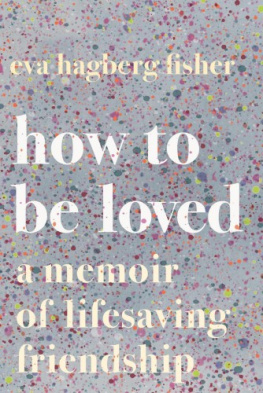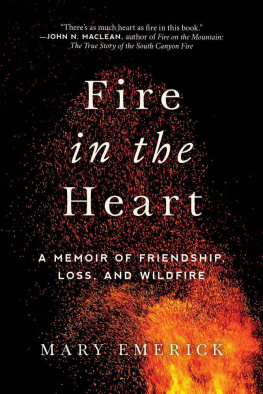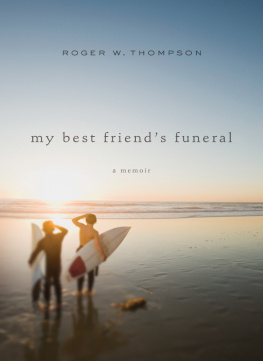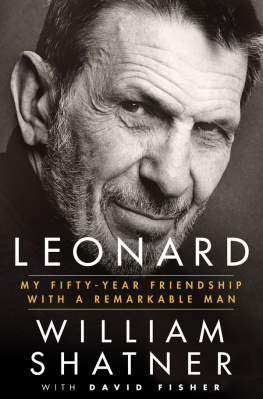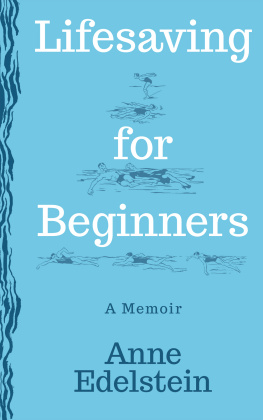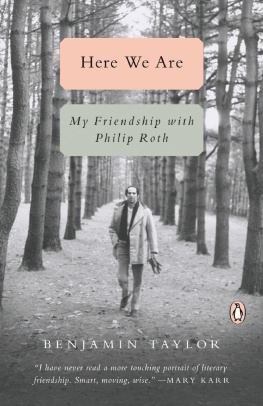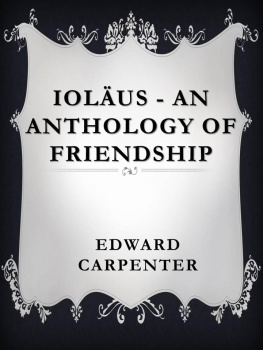Eva Hagberg Fisher - How to Be Loved: A Memoir of Lifesaving Friendship
Here you can read online Eva Hagberg Fisher - How to Be Loved: A Memoir of Lifesaving Friendship full text of the book (entire story) in english for free. Download pdf and epub, get meaning, cover and reviews about this ebook. year: 2019, publisher: Houghton Mifflin, genre: Romance novel. Description of the work, (preface) as well as reviews are available. Best literature library LitArk.com created for fans of good reading and offers a wide selection of genres:
Romance novel
Science fiction
Adventure
Detective
Science
History
Home and family
Prose
Art
Politics
Computer
Non-fiction
Religion
Business
Children
Humor
Choose a favorite category and find really read worthwhile books. Enjoy immersion in the world of imagination, feel the emotions of the characters or learn something new for yourself, make an fascinating discovery.
- Book:How to Be Loved: A Memoir of Lifesaving Friendship
- Author:
- Publisher:Houghton Mifflin
- Genre:
- Year:2019
- Rating:4 / 5
- Favourites:Add to favourites
- Your mark:
- 80
- 1
- 2
- 3
- 4
- 5
How to Be Loved: A Memoir of Lifesaving Friendship: summary, description and annotation
We offer to read an annotation, description, summary or preface (depends on what the author of the book "How to Be Loved: A Memoir of Lifesaving Friendship" wrote himself). If you haven't found the necessary information about the book — write in the comments, we will try to find it.
How to Be Loved: A Memoir of Lifesaving Friendship — read online for free the complete book (whole text) full work
Below is the text of the book, divided by pages. System saving the place of the last page read, allows you to conveniently read the book "How to Be Loved: A Memoir of Lifesaving Friendship" online for free, without having to search again every time where you left off. Put a bookmark, and you can go to the page where you finished reading at any time.
Font size:
Interval:
Bookmark:

Copyright 2019 by Eva Hagberg Fisher
All rights reserved
For information about permission to reproduce selections from this book, write to or to Permissions, Houghton Mifflin Harcourt Publishing Company, 3 Park Avenue, 19th Floor, New York, New York 10016.
hmhbooks.com
Library of Congress Cataloging-in-Publication Data
Names: Hagberg, Eva, author.
Title: How to be loved : a memoir of lifesaving friendship / Eva Hagberg Fisher.
Description: Boston : Houghton Mifflin Harcourt, 2019.
Identifiers: LCCN 2018006363 (print) | LCCN 2018007599 (ebook) | ISBN 9780544991163 (ebook) | ISBN 9780544991156 (hardback)
Subjects: LCSH: Hagberg, Eva. | Mast cell diseasePatientsUnited StatesBiography. | CancerPatientsUnited StatesBiography. | FriendshipUnited StatesCase studies. | BISAC: BIOGRAPHY & AUTOBIOGRAPHY / Personal Memoirs. | FAMILY & RELATIONSHIPS / Friendship. | BIOGRAPHY & AUTOBIOGRAPHY / Medical. | BIOGRAPHY & AUTOBIOGRAPHY / Women.
Classification: LCC RC 924.5.M37 (ebook) | LCC RC 924.5.M37 H34 2019 (print) |
DDC 616.7/70092dc23
LC record available at https://lccn.loc.gov/2018006363
Cover design by Christopher Moisan
Author photograph Jason LeCras Photography
v1.0119
To Melanieact one

one

W hen Allison and I met, it was not love at first sight. Or second, or third, or even ninth. For the first year that we knew each other, all I could see was that she was different from me. I was almost thirty, and well. She was nearly sixty, and sick. She was dying and I would never die (so I believed, so we all believe, until we cant anymore, until we never will anymore).
I would never have met Allison if I werent used to going to rooms filled with sober alcoholics who talked to each other in a concerted effort to stay that way. When I moved from New York City to Berkeley for graduate school in the fall of 2010, I looked for the closest alcoholics-filled room to campus, and got ready to make myself a new home. And the first day I walked into the particular room in which Allison and I met, I saw the same configuration that I would see almost every day for the next eight yearswooden chairs lining the walls, wooden slats lining the windows and letting the sun beam in, a metaphor for all of us who had been so used to the darkness of alcoholism that the sun was warming us, burning off our histories as philanderers and thieves and liars. And I did what I usually did in social situations, which was to scan and assess: looking first for a boy I could get into some trouble with and then a girl I could maybe also get into some trouble with, and then for who seemed to be in charge, and who wasnt, and in my scanning, and in my assessment of possible power and possible sexual gratification and possible friendship with someone who would help me be cool and/or elusively popular, I didnt really notice the woman who sat by the door, focused almost entirely on her tiny brown and white dog.
The woman who, once I did notice her, looked like she was in her late fifties or early sixties or maybe late forties. The woman who had dark hair that fell around her face like a lopsided crown, and who had a face unlike any I had ever seen before. Her mouth was small and her cheeks big, her jaw line ill-defined, her neck padded with pockets of fatwere those jowls? But she wasnt fat, it wasnt that; it just seemed that her body had been somehow rearranged. Her arms were thin and her trunk compensated, and she wore shoes with low heels, and, as I would come to see over days and then months and then years, always jeans and a button-down shirt and a sweatshirt and a jacket, and she always wore Sadies leash like it was another piece of clothing. Later, when she was dying, I would borrow her sweatshirts and her jackets to take Sadie for walks when Allison was too tired to take her out herself, and I would find little free-floating chicken bits that she kept loose in her pockets to feed to Sadie every time the dog behaved herself by sitting quietly and unobtrusively in the meeting, every time Sadie didnt totally freak out when people clapped, as they invariably did, when someone announced that they had just reached thirty days or thirty years or some milestone of a day in between.
A group of us with an hour to spare between the end of the meeting and the start of classes on the campus across the street used to get lunch together at an outside food court a block away. I started joining, tentatively, hanging back, focusing on my burrito, my pad thai, still trying to figure out where the ladder was and where I might belong. Whenever Allison spoke, it was clear she ran the place. It was confusing to me because she was also the most open, the quickest to admit she didnt know what to do. Id never seen someone show that much of her soft belly and receive that much respect. I wanted to connect with her, but I couldnt figure out my angle of approach. Were we equals about to bond? Was she the alpha and I the beta? Vice versa? Was I smarter than her? Was she smarter than me? Id often thought of making friends akin to the process of landing a plane: assess the runway, consider the angle and speed of approach, then go. Hope it isnt too bumpy. Brake, but not too quickly. But with Allison, all those calculations just didnt work.
The first time we finally spoke to each other, her barreling through my performance of quiet listening (a cover-up for the frenzy of social math going on in my head), was on one of these lunches, in September, when I was still new to everything: this meeting, graduate school, the city, the state. The usual stuffresentments, fears, the daily attempts not to drink in the face of life circumstances that had us virtually destroyedhad come up during the meeting itself; lunch was where we went to bond, to recap, to recast our stories in a kinder and softer light. What was spoken of in the meeting in terms of darkness and pain and fear was laughed about over our lunches afterward, and no one laughed more compassionately than Allison.
What classes are you taking? she asked me. She told me she was auditing an English department lecture. Shakespeare.
Architectural history, art history, another one about... cities, I said. I was trying to edit for her, stay away from academic terms that might be, I thought, beyond the scope of her interestor understanding.
And hows it going?
I dissembled. I told her that it was fine, of course. I was having a hard time with the reading, sometimes, but it was good. Really good! I was learning and being challenged and this was nothing like New York but I could do it. The truth is that I was drowning, that I was starting to believe that I wasnt good enough to do this. That I was smart, but not smart enough for this.
Have you made good friends in your program?
A pause. I didnt feel like Id come to grad school to make friends. My cohorts were my competition. Or they were people I could maybe sleep with. Or people who could help me get ahead. But I didnt think friendship was going to be a central part of my grad school experience. Accomplishment was.
Are you finding the other students helpful?
Wait, what? My colleagues and I sort of helped each other, but most of us were also in battle for coveted slots in the PhD program, to which we hadnt yet been admitted, and for which we would have the chance to formally apply at the end of our first year (with the implicit understanding that the interview had begun the day we arrived on campus). I was floating around in masters student purgatory, focusing on that degree but also, every day, waiting and wondering if this could be the day I would make a good enough impression to be eventually let in, let up the next rung of the academic ladder, recommended to continue. Its no wonder I was so insecure; every time I spoke in seminar I wondered if this would be a strike for or against me, if what Id said would be a notch in my favor or a reason to let me go. I felt like there was something wrong with me for feeling so tied to the inscrutable opinions of my professors, and I felt ashamed at how deeply seated my anxieties about performance seemed to be, the ways in which I went over and over sentences after Id said them, convinced Id made some intractably inane observation about train lines, or Marx, or the midcentury American brutalist architect Paul Rudolph, sure that this time I had confirmed that I would be encouraged to pursue an alternative career, as academic rejection tended to be framed. Allison must have sensed all of this in the way I answered her, because she started talking about herselfa trick I later saw her do with everyone she spoke to, a way of relating to the basic feelings, no matter the details.
Next pageFont size:
Interval:
Bookmark:
Similar books «How to Be Loved: A Memoir of Lifesaving Friendship»
Look at similar books to How to Be Loved: A Memoir of Lifesaving Friendship. We have selected literature similar in name and meaning in the hope of providing readers with more options to find new, interesting, not yet read works.
Discussion, reviews of the book How to Be Loved: A Memoir of Lifesaving Friendship and just readers' own opinions. Leave your comments, write what you think about the work, its meaning or the main characters. Specify what exactly you liked and what you didn't like, and why you think so.

